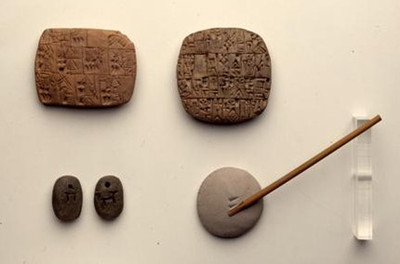Clay may not seem to us the ideal medium for writing, but the clay from the banks of the Euphrates and the Tigris proved to be unbeatable for all kinds of purposes, from building cities to making pots, or even, as with our tablet, for giving a quick and easy surface to write on.












